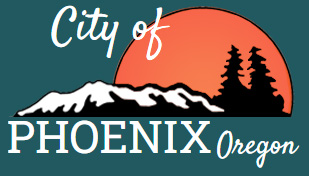Current Updates
Phoenix Land Development Code Amendment
The City of Phoenix, as part of the concurrent Transportation Growth Management (TGM) Bear Creek Corridor Visioning & Strategic Planning project is independently reviewing its existing Land Development Code to enhance its review processes following the 2020 Almeda Fire. Post-fire barriers to redevelopment, including outdated processes and procedures have slowed redevelopment across the board, with commercial redevelopment being the most impacted. The City's goal is to complete a thorough code audit through a post-fire lens that evaluates opportunities to create clarity and consistency with applicable local policies and state regulations and to streamline the review process for new and post-fire redevelopment.

Timeline for Amendments
Code Audit: January 2023 - March 2023
Draft Code Amendment to Planning Commission: July 2023
Draft Code Amendment to City Council: September 2023
Code Amendments Completed: Spring 2024
Draft Amendment Documents
Exclusive Agriculture Overlay Code Amendment
The proposed amendments to the Phoenix Land Development Code will create an Exclusive Agriculture (E-A) Overlay to provide a land use classification that allows for the preservation of agriculture and agricultural uses on properties annexed to the City. The overlay may only be applied upon the request of the property owner, and only if the use on the parcel(s) is agriculture. The overlay can be removed utilizing the Land Use District Map Amendment (zone change) procedures of Chapter 4.7. For removal of the E-A overlay, the property owner must certify that all agriculture and agriculture-related uses not otherwise permitted by the underlying zoning district have been terminated by the date of application for removal of the E-A overlay, and shall not be considered legal nonconformities. The proposed amendments will also amend the Holding Zone (Chapter 2.11) to allow for agricultural use (when the E-A Overlay is applied) and for the development of public and private infrastructure necessary to facilitate future urban development.
Timeline for Amendments
Code Audit: October 2023 - December 2023
Draft Code Amendment to Planning Commission: October 9, 2023
Recommended Code Amendment to City Council: November 6, 2023
Code Amendments Completed: November 2023
Mass Timber Modular Housing Code Amendment
The Code-Up initiative seeks to create markets for modular mass timber housing by updating state and local planning and development codes to remove regulatory barriers to new housing types. With this investment, the DLCD will work directly with cities and Economic Development Districts to increase development and technical capacity by modernizing planning and development codes to accommodate modular mass timber homes in rural and wildfire-impacted communities.
In the coming months, the City will be working with DLCD's Code-Up Engagement Team to ensure a responsive outreach program made of of local citizens and business owners to collect data on community needs and to customize siting and design approaches for the City. For more information, or if you are interested in being involved in this project, please contact Zac Moody, Community Development Manager at zac.moody@phoenixoregon.gov or by phone at 541-535-2050
Timeline for Amendments
Code Audit: November 2023 - June 2025
Draft Code Amendment to Planning Commission: TBD
Recommended Code Amendment to City Council: TBD
Code Amendments Completed: June 2025 (or sooner)
